In October, Windstar President Chris Prelog received the Styrian Tourism Panther Award for International Achievement in hospitality leadership from the Bad Gleichenberg Tourism School. It’s a big deal for Chris, who grew up in Austria’s region of Styria, not only because he’s a graduate but also because Bad Gleichenberg is considered one of Europe’s most prestigious tourism schools.
Anyone who knows Chris will be delighted and, well, not terribly surprised, that his creative, caring and visionary leadership has earned him this recognition. He rose through the ranks by working onboard cruise ships before coming ashore as an executive, and that’s a distinction among cruise line presidents. As well, he’s passionate about encouraging young and developing professionals to purse tourism careers.
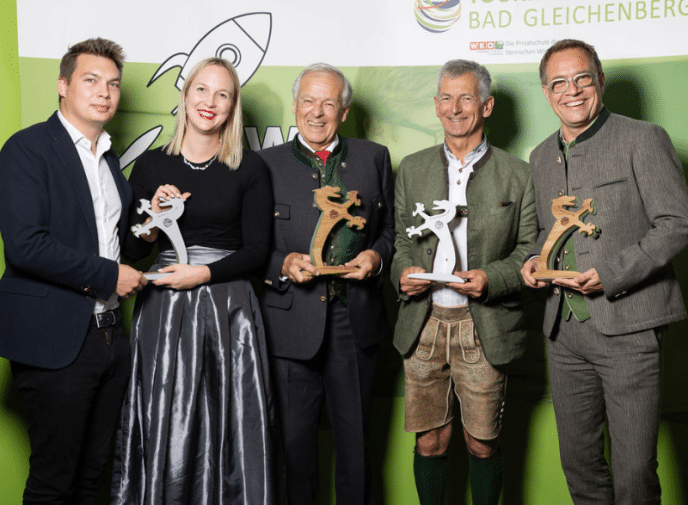
“We selected Christopher Prelog as our top winner in the international category due to his impressive career,” said Dr. Gerhard Kienzl, managing director of the Styrian Hotel Management School Association. “Chris is a wonderful role model for our young tourism professionals, and we are proud of his achievements throughout the hospitality industry and the impacts he has made both at home – and especially abroad – with Windstar’s highly regarded global presence.”
We thought it might be fun to share some insights into his background and personality, and how he’s evolved from a visionary’s perspective.
A couple of key points: Chris has over 30 years in the hospitality and cruise industry. He grew up in Austria, in the city of Graz. And this might surprise you: his clearly successful cruise career was almost derailed on his first assignment. He prevailed, however, and we’re happy to share some of his stories via this Q&A. (Have questions for Chris? Please post them in our comments section, below, and we’ll get you answers).
You grew up in Austria. What was your childhood like?
Austria is well respected around the world for its tradition and reverence for hospitality. My dad owned a number of businesses. He ran grocery stores, ice cream shops, food and beverage stands at trade shows. So I’ve grown up in service-oriented surroundings. Later, my dad and my mother encouraged me to go to the Tourism Institute in Bad Gleichenberg. It’s a prestigious hospitality management school in Austria, and many senior executives have visited that school or been educated there. I attended its 5-year program, its most extensive, and learned everything about hospitality in the program. The focus was not just service and cooking but also the whole administrative part and financial side, the marketing and sales side…everything you need to know about the business of hospitality. It’s a boarding school so I was there every day, 24/7, and instead of having the usual summer vacation — two months off – I actually had to apply to hotels and restaurants and work for two months.
Once the summer job ended, I returned to school, where the program was always intense.
Important to note: It’s also a private school, not a government-funded program. I’d say it’s up there in reputation with Lausanne, one of the best hospitality management schools in Europe.
Where did you start your career in hospitality?
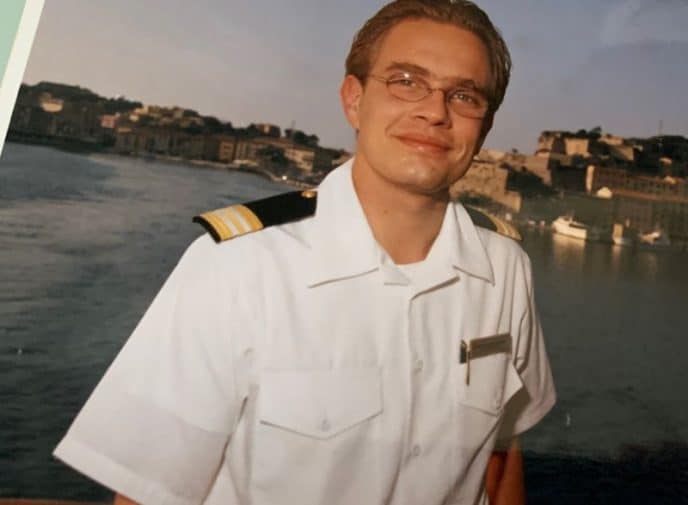
Through practice runs during my 5-year program, I ended up at a small, privately-owned hotel in Seefeld in Tirol, an Austrian village that has twice hosted the Winter Olympics. I liked it because when I had time off, I could ski. I was there every year for my practice runs (which Americans might call “internships”) and after I graduated, I worked at the hotel full time. It operated a few restaurants in town, from a steakhouse, to Italian, to Tyrolean food, so it was a very diverse work environment. It also operated a restaurant in a building with a huge swimming pool. It was a great environment for learning the ropes.
After a couple of years, I wanted to do something else and see what it was like to work in Vienna, which to Austrians is “the big city.” I applied to several hotels, but Hilton was at the top of my list because it was the biggest and had a great reputation. I had already done a lot of service and administrative work. Now I wanted to learn everything there is to know about reception and front office, and front of house work.
What made you decide to trade in a hotel career for life aboard cruise ships?
After three years at Hilton, like all young men in Austria, I had to go into military service for nine months. When I came back I was ready for change. Friends from school and from Seefeld had talked about cruising and how it was an exciting industry if you wanted to see the world and I found that intriguing. In late 1997, I connected with people from Seabourn and had a number of interviews, including one with Peter Tobler (now director of hotel operations at Windstar), at Seabourn Cruises. I landed my first cruise job on Seabourn Legend, as head waiter.
A difficult beginning got better with time
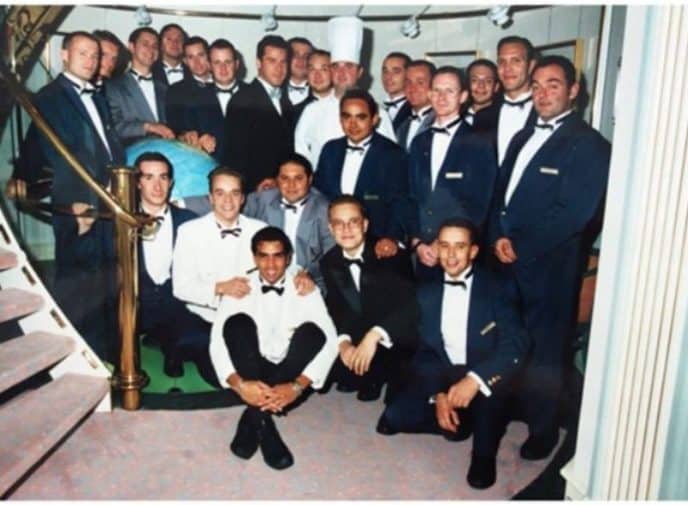
When I boarded the Legend, my world turned upside down. I could feel the ship moving while it was moored to the pier! My knees got wobbly and being on a boat just didn’t feel right. It can happen when you join the cruise industry; you don’t know what you’ve signed up for. You get thrown into everything so quickly. It’s very busy and you need to learn many disciplines. On top of that, the ship moves. I got seasick and didn’t feel that great.
I had flown to Sydney, Australia, to meet the ship. When I got off the plane in Australia after an extremely long flight, the people on the Legend were really nice, but I had jet lag and was extremely tired. I got medication from the doctor that made me even more tired. Then, I was demoted from head waiter to waiter. The system aboard a ship compared to regular restaurant operations is very different, and my English wasn’t that good. There was also a bit of a cultural gap – we don’t eat English muffins in Austria and I’d never seen one before. So here I was polishing cutlery and learning the “cruise industry trade” from the very baseline. It wasn’t easy but now I am hugely grateful that I was able to get this experience.
Still, I was not happy. I called my father from Tasmania and said, “This isn’t going well. I don’t think I’m going to last.” My father told me, “Well, suck it up. You signed up, you’re going to do it.” That was the push I needed. You need a little time to get used to cruising, but you’re joining a family and you develop friendships.
We were heading to Bora Bora and I thought, “Okay, I’m going to wait until we arrive there, and then I’ll decide. Bora Bora was absolutely beautiful and I decided to finish the contract and not return. But two months later, when it was time to go home I was so integrated into the operation onboard that once I was on vacation I thought, “Oh my gosh, when can I go back?” Every time you leave you can’t wait to return.
It took a little while to establish myself, but eventually I made headway and became head waiter and maître d’hotel, some of the most difficult jobs on the ship. You’re young and still learning and everyone needs something from you, whether it’s management, the crew, or the guests. It takes a while to get a handle on that and do it well. I think that’s what drew me to cruising as well, because you work with people who have different nationalities, ethnic backgrounds, religions, and so forth, and everyone works in harmony on the ship. That’s a pretty cool thing, and then if you want to see the world and learn about other cultures, you do.
I was the hotel manager when life threw me a curveball. My daughter was born in Austria. It’s hard when you have a baby and have to leave for four months. I didn’t want to leave my family at home, but I didn’t want to leave my family at sea, either. I returned to the ship and the senior management of Seabourn surprised me and asked if I wanted to move to the head office in Miami.
Four months later my family and I arrived in Miami, which was a turning point. It was then I decided that cruising and I were going to get serious. I was going to expand my horizon and learn, learn, learn.
In 2013 Windstar bought 3 Seabourn ships from Carnival Corporation, its parent company, including the Legend. What was that like?
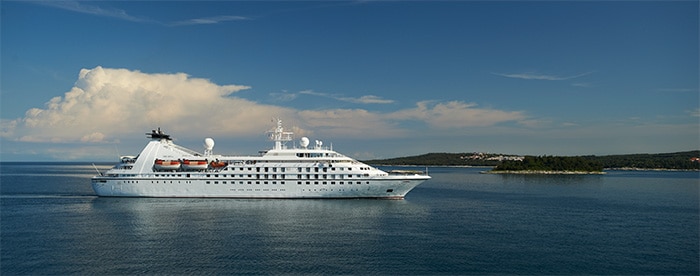
I’ve been fortunate to be surrounded my entire career by amazing mentors and people who’ve had my best interests at heart. That was especially important in Miami, because when you switch to working shoreside with a cruise line, everything changes. You’re in a different environment. But I really liked it and was soon promoted to director of hotel operations. The company moved to Seattle in 2011, where I was promoted to Vice President of Hotel Operations and Purchasing. I also worked for Holland America to help drive efficiencies and effectiveness.
When Seaborn sold my three favorite ships, I was disappointed. You always remember your first ship. I told my president at the time I was going to go to Genoa and watch the Legend in the handover protocol and go cry in a corner somewhere. That was the first interaction I had with Windstar employees who were all hopped up and happy to take the ship “away from me”. It was a significant memory. John Delaney, the then-president of Windstar and I started talking – we had worked together at Seabourn – and he asked if I knew anyone who could run the fleet.
I saw an opportunity at Windstar, which makes small ship cruising special, and I looked forward to expanding my horizons because running a fleet is very different from running a hotel operation. Within operations key departments you oversee are safety, environment, compliance, marine, technical operations and health. I had some experience in almost all those areas, but starting at Windstar as vice president of fleet operations gave me an even greater understanding of what makes a successful cruise as I got more involved. I really enjoyed that. Moving to the chief operating officer role gave me even more experience in the Technical Operations area.
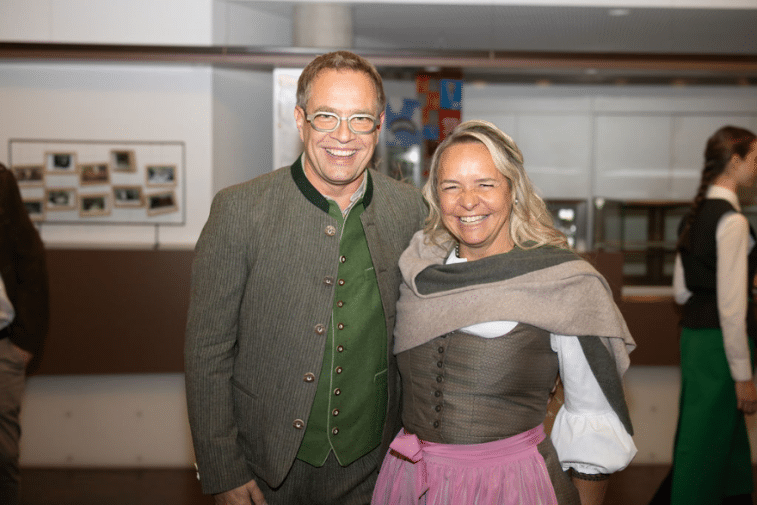
Besides getting on-the-job experience, you pursued education How did you manage to do all of this?
Yes, even while working in the cruise industry I studied at collegiate institutions. I got a degree in Hotel Management and Accounting from the University of Miami, and certificates from Harvard’s Kennedy School, Cornell University, and the Higher Tourism Institute in Austria.
Silke, my amazing wife, makes this life easy. She’s never said she’d rather I didn’t do something related to my role. She knows this is not a normal job; I travel a lot and she runs things at home so I can focus on my job. The fact is I am absolutely sure that without Silke’s support I would not be in this position today.
Have you ever thought about recreating your original cruise line role of being a waiter? Would you ever surprise the crew and guests on one of your ships?
I absolutely will think about it! I probably would screw up more than I’d do well. I mean, I like good coffee, and I did some barista training in the Yacht Club a few years ago, which was a lot harder than you’d think. And it might be that I’ve forgotten more than I ever learned about being a waiter (and our team has really evolved and surpassed that era). Working an entire dinner service? Makes me nervous, but I kind of like the idea. It could be a cool surprise to the team and guests.



















































Fascinating story. My husband and I have sailed with Windstar in the Caribbean, Mediterranean, down the coast of Vietnam from Hong Kong. We LOVR Windstar. During one cruise, I came down with a bad cold that kept me cabin-bound for a few days. The crew were fantastic, like a loving family. They brought every meal to our cabin for me—including a birthday cake because my birthday happened in the middle of my illness. Windstar is our first—and usually only choice for sailing. Now we understand better who is responsible for all of the great service and food. Thanks for this… Read more »
Thank you Cynthia for your very kind comment. Indeed it is the best part of Windstar – “The family feeling when you are onboard one of our yachts”. It exists between Guests and Crew alike and the Windstar family will always take care of each other. It comes from a place of genuine care and commitment to create an amazing vacation experience for all of our guests. I see my role in creating an environment where our teams onboard and shore side can excel in their function. Thank you again for being such a loyal guest and on your next… Read more »
Fantastic article. So impressive. I love Windstar both sailing yachts and 3 former Seabourn yachts.
Thanks, Tyler, for the nice words! –Carolyn